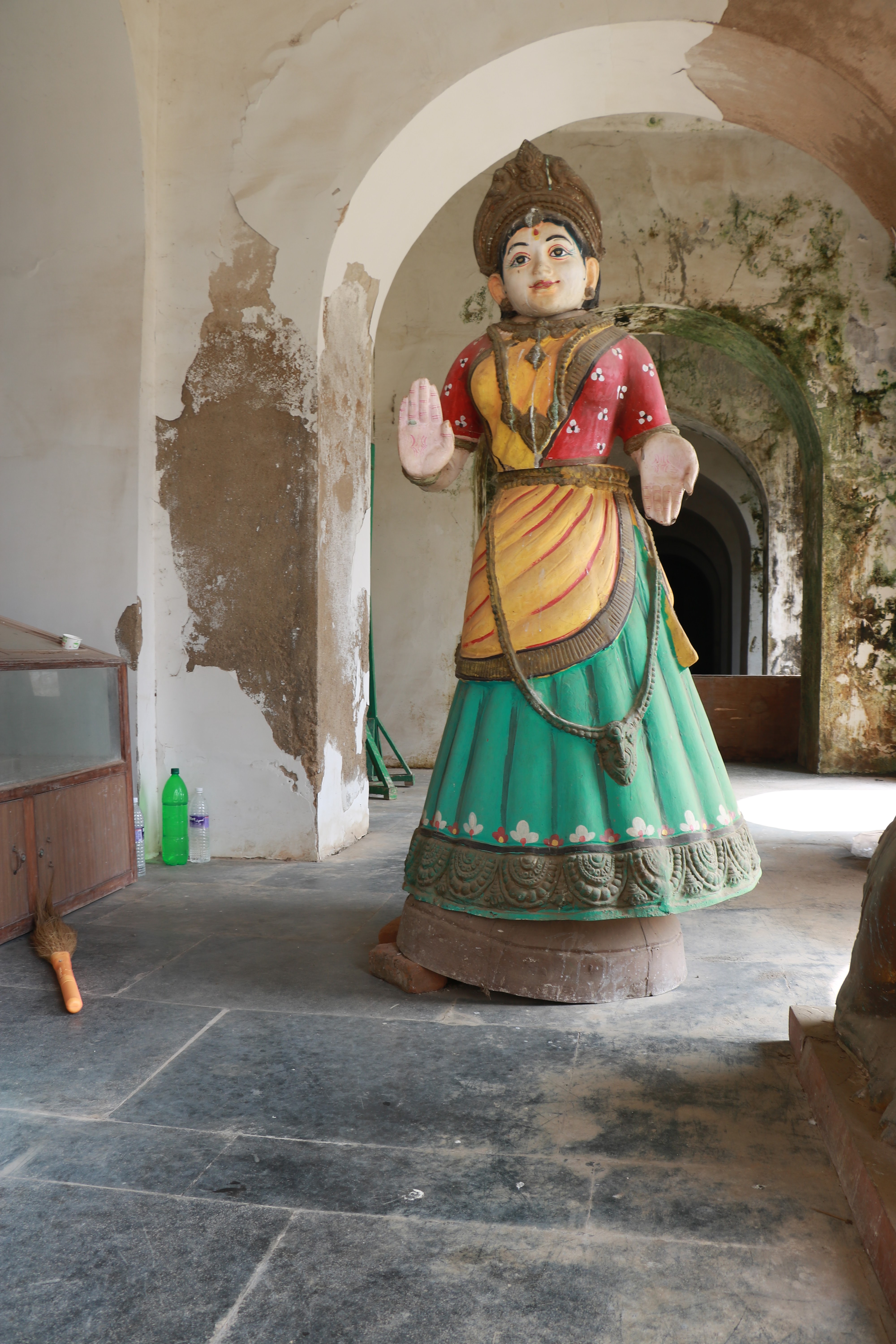Thanjavur Palace
On our second day in Thanjavur, after visiting the Brahadeeswarar temple we went to the Thanjavur palace, this lies within a kilometre from the temple.
This palace is built by the Marathas during their reign. As soon you enter the gates, a parking charge of Rs.10 is collected and we are asked to park the vehicle there itself. We cross over a school in the same compound and reach the entrance ticket counter. Its Rs.50 per head and it covers the entrance charge to all places inside the Palace except two private museums. As we walk through the corridor to get inside the Palace we can see Bunk Anjaneya on the right hand side. Walking further, we get to the Saraswathi Mahal Library. Here you could see books for sale and a small museum of old photographs. Beyond this is the actual library containing all old books collected for years but we not allowed into that area to protect the old books. Researchers and others take permission to get into that library.
The first private museum is by the royals of Raja Serfoji who have put on exhibit, the old artefacts in possession with them, like the weapons, trunks, kitchen items, European porcelain collection, Raja's head gears and weights. They charge Rs.2 per head here. The second one is on the first floor for an entrance of Rs.5. This the Raja's hall where they have displayed his guns, coins of those times, Raja's wardrobe, his throne, porcelain items and old photographs. Near this hall is a secret tunnel, we could just peak into it, its been inhabited by bats. After this we need to climb down the same narrow staircase. Here, few areas here cordoned for public view.
From there we go to the Darbar of the palace. The floor where the throne sits is made of a single stone. There are paintings around the throne's wall. This palace is with the state archaeological department. In front of the darbar hall is Nandi and there are is few other collection of old sculptures got from excavations displayed in the adjacent hall. Here we have a staircase leading to the Gooda Gopuram. This had been used by the army of those days to store their weapons. We get a fair view of Thanjavur from the top most floor.
Next is the Bell tower. The bottom of this tower is again used for weapon storage. We are not allowed to climb up the stairs of this tower. Finally we are at the AV hall next to the Saraswathi Mahal Library. This is a mini air conditioned theatre, the seats are good and the AV was just excellent. The district administration has taken the efforts to show case the tourist attractions of Thanjavur and the richness of Chola dynasty. The AV list all the places, gives a glimpse of them and a brief narration. Mostly drone shots, its quiet informative.
We have spent around 2 hours at the palace. With this we head out for lunch break. Lunch at Krishna Bhavan near big temple was a simple affair. Shops here also sold Thanjavur dolls, looked expensive to us; so we did not indulge in any shopping. But we were taken to a nearby home where they sell hand made dolls and paintings. We got few Thanjur paintings in table frames.


















Comments